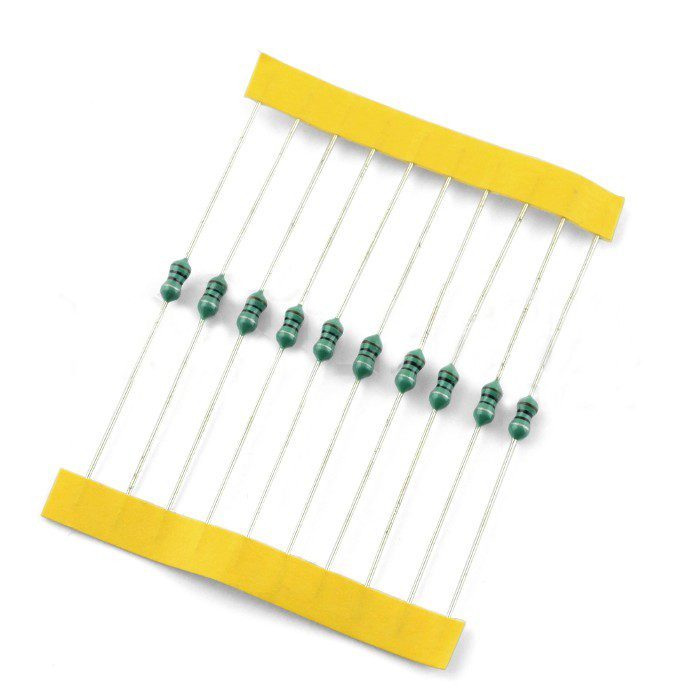Table of Contents:
Let’s start with this – it’s otherwise known as an induction coil, also known simply as a coil, or choke. Precisely – it becomes a choke when it starts to work, about which more later. These are passive, two-terminal electrical components. This places them in the same category as resistors i capacitors. Chokes store energy in a magnetic field when an electric current flows through them. In contrast, an indu ctor has the same structure as a coil, but most inductors called inductors have a single winding. The action of an induction coil is proportional to the square of the number of turns or radius and inversely proportional to the length.
In the same direction, the magnetic field generated around the wire is bound and becomes an electromagnet – and vice versa, generating electric current from magnetic force is also possible.
Magnetism, current and chokes
When the magnet is moved closer or farther away from the induction coil, which has become an electromagnet, the magnetic field of the induction coil will change. This causes an electric current to flow to generate a “counteracting force” that attempts to maintain the direction and momentum of the magnetic field. It is the notorious electromagnetic induction. When the direct current (DC) reaches a certain value, the magnetic flux stops changing, and force is no longer generated. Thus, the current is no longer disturbed. On the other hand, when an alternating current (AC) is applied, then, the voltage becomes higher as the current increases from 0. As the current rate slows, the voltage decreases, and at the point where the current reaches a maximum, it can drop to zero.
Where are chokes (coils) used?
Since induction coils can easily pass direct current (DC), but have a property that makes it difficult to pass alternating current (AC), and furthermore, when passing AC, induction coils have the property of suppressing its waves and transforming them into a gentler current, some specific application comes to mind almost immediately. It is for these reasons that induction coils are used in the power circuits of DC-powered electronic systems.
Ordinary power supplies are AC circuits, so in order to operate electronic circuits it is necessary to go through a smoothing circuit to regulate the current. Induction coils are used in these circuits.
Chokes are also useful in removing noise, as they retain high-frequency AC current. Induction coils used in power circuits are mainly called induction coils or choke coils.
They are used by switching power supplies, converters, radio and TV antenna systems (impendance matching between antenna and transceiver), band-pass filters, circuit protection against overvoltage and electromagnetic interference, electric motors requiring energy storage and current regulation, and audio devices for amplification.
Chokes in electronics and assembly
An induction coil is a relatively simple electronic component that has the ability to store energy in the form of an electromagnetic field – this we already know. It works on the principle of electromagnetic induction and is made of a wire wound on a permanent core. For a beginner, it is important to understand at least a few key concepts.
The first is electromagnetic induction. It is a physical phenomenon in which a changing magnetic field in a conductor induces an electric voltage in the same conductor or a neighboring circuit. This means that if the current flowing through the induction coil changes, it causes changes in the magnetic field, which in turn causes the appearance of an electric voltage. It’s being used more and more widely in bicycle generators, fuel level indicators or RFID technology, but a lot of ambiguity surrounds it and we often only think we know something there. We’ll preempt your question – yes, electromagnetic induction is used in modern home appliances known as induction stoves. These stoves use just this kind of induction to generate heat.
An equally common concept that falls out of favor is coil inductance. This is a coil parameter that measures its ability to store energy. The greater the inductance, the more energy can be stored in the coil for a given current. In a simple electronic circuit, such as an RL circuit (consisting of a resistor and an inductor), when we supply the circuit with alternating current, the inductor will store energy in a magnetic field while resisting the change in current due to its inductance. If sudden changes in current are imposed on this coil, it will induce the appearance of a voltage to counteract these changes (induced voltage), which is related to electromagnetic induction. This allows our coil to act as a “resistance” for rapid changes in current. It is difficult to explore more advanced concepts with electronic circuits without knowing these few facts.
Types of chokes
The simplest type of chokes are air chokes. The wire is wound on a puck or cylinder rather than a magnetic core. They have low inductance and are used in simple filtering or signaling circuits. Ferromagnetic chokes are those in which the conductor is wound on a core of ferromagnetic material, such as iron or ferrite (a solid solution with iron). The core then increases the inductance of the coil, and this allows more energy to be stored. Ferromagnetic chokes are used in the previously mentioned advanced applications such as converters, voltage stabilizers and transformers. A division by shape is also encountered – these can be ring chokes often found in audio equipment, differential chokes with coils wound in opposite directions (operational amplifiers, differential communications) or, finally, wire and flat chokes – by far the most compact in space-constrained devices and designs.
How useful was this post?
Click on a star to rate it!
Average rating 5 / 5. Vote count: 1
No votes so far! Be the first to rate this post.




















